At the 1981 Whitewater Nationals in upstate New York, canoe racer Tom Staz arrived to the event with a boat that caused a stir among competitors. He had modified his Wenonah race canoe with a low-set bucket seat and foot braces. If the conventional wisdom for paddler positioning were an indicator for how the race should have played out, Tom Staz would have finished dead last. Instead, he surprised everyone by finishing minutes ahead of the next competitor.
While materials, weight, length and trim are all aspects most paddlers consider when they are in the market for a canoe, rarely do we reconsider how we sit in our boats. And where we live determines how we sit.
“The Lower 48 is a sitting market, whereas Australia, Germany, the United Kingdom and Canada prefer to kneel,” says Bill Kueper, vice-president of Wenonah Canoe, which manufactures canoes with both seat styles. “There are cultures of sitting and kneeling, and you are more likely to sit or kneel depending on where you learn and what water you paddle.”
Kueper jokingly likens the two seating styles to the Reformation between the Catholic Church and Martin Luther. Some people swear by their seating position, and others just don’t know any different.
“The height of bench seats is the real reason kneeling became the staple of canoeing tradition,” says veteran marathon racer and coach Peter Heed. Kneeling lowers a paddler’s center of gravity, especially important for rough conditions and river running.
While kneeling was commonplace in the early days of recreational and sport canoeing, bucket seats were quickly adopted by marathon paddlers following Staz’s 1981 debut. Buckets were mainstream in the race scene and recreational market by 1983, according to Heed.
“Sitting is preferred as a more comfortable position over long distances, and for more powerful sprints,” says Heed. However, for lovers of traditional aesthetics, departure from the seating style of Bill Mason and the voyageurs before him may feel akin to blasphemy.
While the bench seat is simple, adaptable and easier to alter trim from, when considered from an ergonomics perspective, “the bucket seat is preferred,” asserts Greg Redman, lead physiotherapist for Canoe & Kayak Canada.
“Sitting places the pelvis in a better ergonomic position under the spine. The paddler’s back muscles are not in a stretched position and therefore allow easier trunk rotation to place the blade further forward,” says Redman. “Bucket seats are also more comfortable as they wrap around the glutes, providing better stability.”
Bucket seat design has come a long way since the refabbed tractor seats of the ’80s. Some manufacturers offer multi-point contact seat outfitting systems—keeping butt, knees and feet in contact with the boat—which increases control in rough water. For the pros, bucket seats are meticulously customized to ensure fit, offering greater side and lateral support for additional power.
Despite expert opinion that bucket seats promise to make us stronger and faster paddlers, there’s not a clear winner in this debate for average canoeists. Both seat styles offer their advantages.
Kueper notes that for the regular consumer, bucket seats aren’t custom-made and are shaped to fit the average butt. Bucket seats may also limit onboard maneuverability—the bow paddler can’t turn 180 degrees to face the stern for an on-water lunch or sit askew comfortably to fish, and there are no seating options for soloing a tandem design.
“Bench seats are simply more versatile for accommodating a variety of activities,” summarizes Kueper. —Gabriel Rivett-Carnac



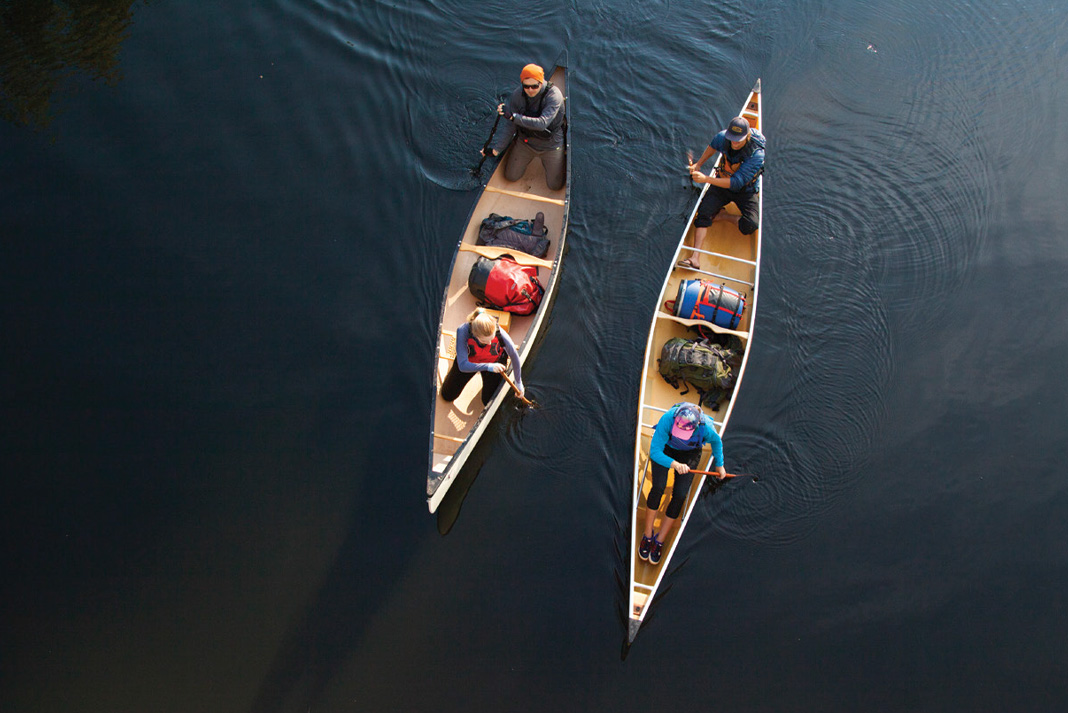

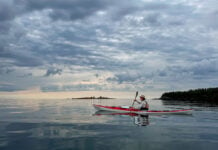
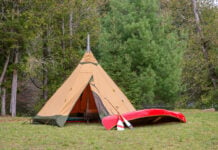
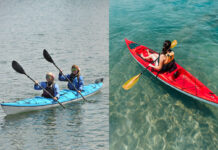
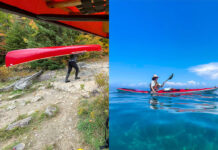

First off, the 81 Nationals were on the Nantahala, in North Carolina. Second, bucket seats were being used by most serious open boat whitewater racers as far back as the early seventies.
We used bucket seats with foot braces in a Swayer 18’6″ canoe to win the C-2 Indiana State Canoe Championships in 1967. They are more comfortable and provide a more stable base compared to a bench seat.
This is a very trivial and one-sided presentation which probably does more harm than help. There are many good reasons to prefer bench seats for certain types and uses in Canadian canoes, but being comfortable at lunch is not one of them. Sprint and wildwater racers always kneel, as do most racers on more turbulent whitewater. Kneeling is very hard to do with low bucket seats. There are boat designs and uses for which bucket seats are preferable, and some uses in which both work well, as using a bucket in the narrow stern and a bench in the wider bow for tandem teams who want to be stationed near the onside gunwale to perform more vertically forward and drawing strokes.
I’ve been kneeling in canoes since before 1976.
I can’t sit in the “feet forward” posture for more than ten minutes, for the same reason I am a canoeist and not a kayaker:
that posture makes my lower back hurt.
Bench seats give us the option to sit or to kneel, or to reverse the boat, which might be done for many reasons: the tandem lunch or fishing stop previously suggested, going up a narrow creek and having to back-out without turning the boat around, or having a child on the stern-seat and an adult on the bow-seat, both facing aft with the whole boat reversed for balance.
I just spent 3 days paddling in a canoe with cane seats. My butt is still sore. Give me a bucket any time.
We like our Saranac 146 contoured seats with comfortable seat backs and the center bench seat. At 83 years of age, kneeling isn’t an option.
That’s like asking what shape of canoe is best.
The only correct answer is “It depends”! (on how it’s being used!!!)
Buckets (with foot braces) are great for adults & competitive paddlers.
Benchs are WAY more versatile for recreational (& all sizes of) paddlers. Sloped front web benchs don’t bruise your butt & allow endless variation of seating/kneeling styles/positions.
So let’s muddy the waters further with: How about saddle seating?